
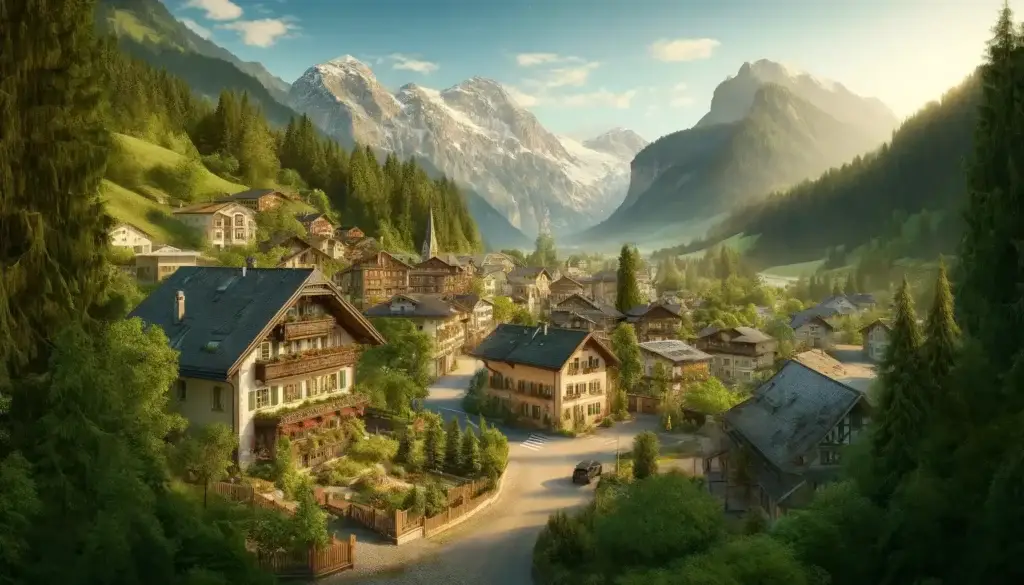
We are used to Tyrol being the heart of the formidable Alps. By and large, this is how it is. However, this statement needs some clarification regarding the European mountain system that stretches from the Mediterranean Sea to the Middle Danube Plain. In the countries of the Alps involved, they are called differently without changing the understanding of the subject of discussion. In France, these mountains are known as les Alpes; in Italy, they are known as die Alpen; in Slovenia, they are called Alpe; and in Germany and Austria, they are called die Alpen. Historically, it is believed that the derivation in these words is taken from the Celtic alb or alpha, which sounds like high height in translation.
These mountains belong as territories to Germany, Austria, Italy, Slovenia, France, Switzerland, Liechtenstein and Monaco.
The mountain system stretches for one thousand two hundred kilometers with hard-to-reach ice peaks, the largest of which is Mont Blanc, which is more than four thousand eight hundred meters high.
The Alps are conditionally divided into Western and Eastern. In the first case, these are mainly mountains with three and four thousand meters, steep slopes and many glaciers.
In the east, the lower mountains are known as the Carnian, Dolomite and Rhaetian ranges.
An essential point in the systematic knowledge of the Alps is given to glaciers, of which there are almost one thousand two hundred. Many rivers are born on their peaks, including the most famous Rhine, Inn, Drava, Rhone, Adige, etc. This is not surprising, considering the large areas bound by ice. For example, the area of the largest alpine Alytsky glacier is one hundred and thirty square kilometers.
However, now we will talk about the territory in the eastern part of the Alps, which is part of Austria as its federal state and the Italian autonomous provinces of Bolzano and Trentino.
Tyrol is located in the alpine zone of the historical region of Central Europe on the border of Italy, Switzerland and Germany.
The concept of Tyrol, or its name, arose as a derivative of the surname of the same name of wealthy landowners who lived in a castle on the territory of present-day Italian Merano.
The historical past of this territory begins with the early settlements of the Ice Age. This region has always played an important trade and military role in European history thanks to its strategic location.
Tyrol, or the federal state of Bundesland, unites North and East Tyrol and covers almost thirteen thousand square kilometers of the central Alps. Next to the Limestone and Kitzbühel Alps, the Lienz Dolomites and the mountain rivers Lech and Inn. Road and rail connections represent Most trade routes here, usually in the Inn and Drava valleys and through the Brenner Pass.
Even though Tyrol in the north and east is a bridge for migration with Europe, it produces agricultural products and animal husbandry and has a good dairy industry.
Traditionally, alpine villages still cook delicious cheeses and engage in agriculture and wood processing. In addition, magnesite, copper and salt are mined here. In the forties of the last century, the electrotechnical, chemical and pharmaceutical industries developed.
And, of course, the tourist business, the peak of whose growth occurred at the beginning of the twentieth century. Today, the tourism industry, with developed infrastructure and ski resorts, has become dominant in the region.
Let’s mentally go back to the thousand-year history of Tyrol. We will see that even at the birth of the Bronze Age, several cultures of that period – Laugen-Melaun-Kultur and Fritzens-Sandzeno – were organically intertwined. The Laugen-Melaun culture existed at the junction of the Bronze and Iron Age societies, which Fritzensa-Sandzeno succeeded. Historians believe these cultures can be considered the initial stage for Tyrol. True, it ceased to exist at the end of the Iron Age, after the capture of the Alps by the Roman Empire led by Gaius Julius Caesar Augustus. To commemorate this victory over the forty-five tribes that inhabited the Alps, the event was named the Alpine Trophy.
This is not the only case of shaking the freedom-loving people. Throughout its history, Tyrol has experienced periods of decline and prosperity. They saw Celts and Hannibal’s live elephants that crossed the harsh Alps and Roman settlements. And Napoleon’s 40-strong army conquered these peaks. Under the Goths, the lands were annexed to the Ostrogothic kingdom. In the next upheaval, the southern Tyrol became part of the Italian kingdom of the Lombards, the northern was given to Bavaria, and the western to Alamania.
In addition to wars, the cultural growth of the territory is remembered here, with the influx of writers, sculptors, artists and other intellectuals, the rapid development of mountaineering with the conquest of the highest ice peaks and, of course, the holding of two winter Olympic games.
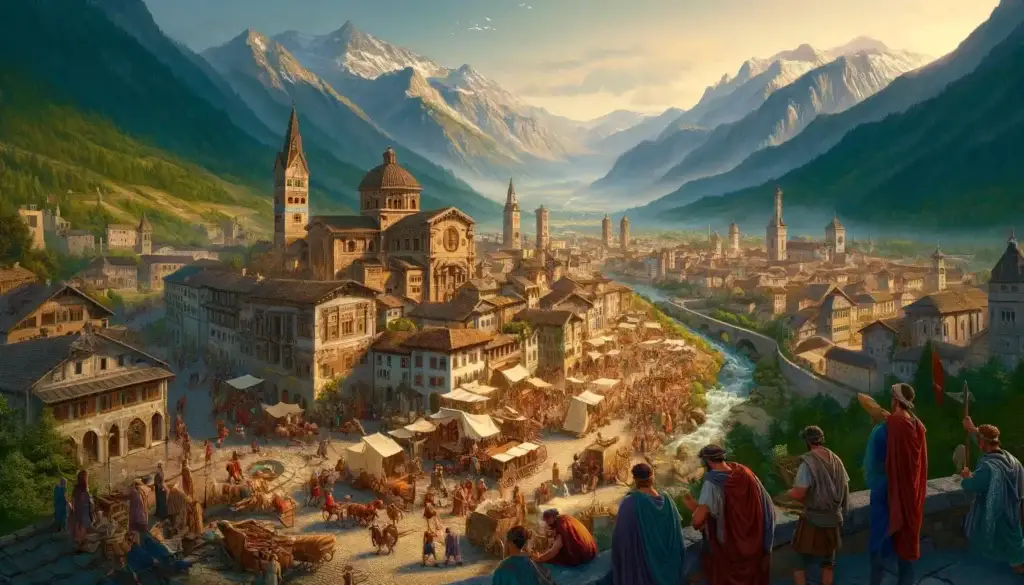
The Roman period for Tyrol began in the Iron Age when the Romans conquered territory and enslaved the Alpine population of the Raeti. Then, the northern and eastern Alpine regions became part of the Roman Empire as the provinces of Rhaetia and Noric.
Later, administrative and territorial units, the so-called Reichskreis, were created as part of the Holy Roman Empire. Such formations from large historical regions retained their sovereignty and maintained order and military-fiscal control over the empire’s territories.
Tyrol was introduced into the Roman Empire as an administrative-territorial unit, the County of Tirol – Grafschaft Tirol on the lands of the Bavarian Duchy of the Austrian District. At that time, it was the territory of the border of present-day Austria and Italy, with the formal capital of Merano under the rule of the Counts of Tyrol.
Later, the influential German dynasty of the Goryts, which controlled most of the territories of Bavaria and Austria, gained power.
The members of this family, the Meinhardinger family, controlled Tyrol, Gorizia and the Duchy of Carinthia. This region was then known as the Land of the Adige and the Inna.
At the same time, the Roman period marked the beginning of Tyrol’s acquisition of historical significance in Europe. Cultural, economic and political. The construction of roads, large cities, and the expansion of production and trade marks it.
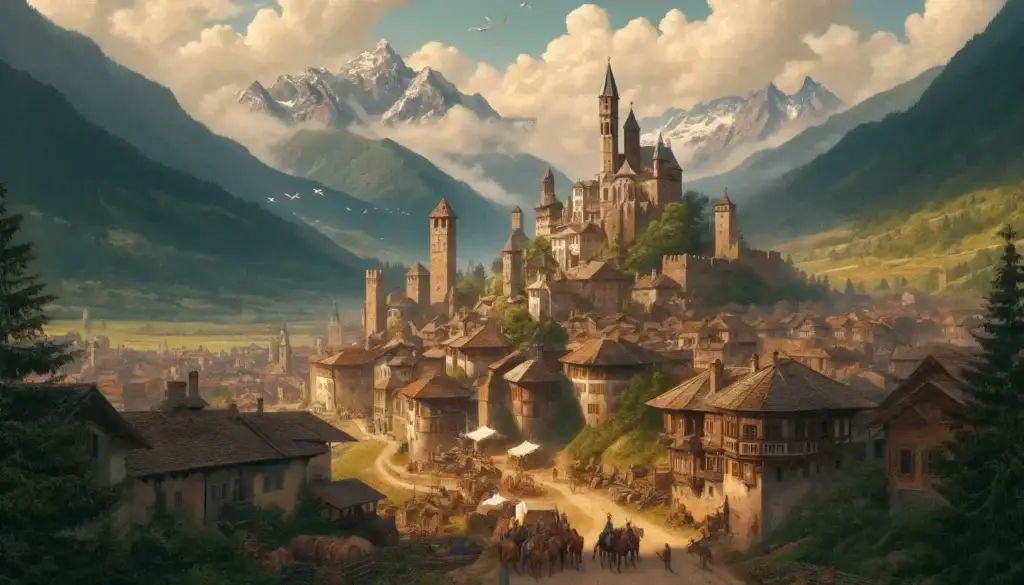
The Middle Ages are the flowering of feudalism, the active spread of Christianity, the expansion of trade relations, the construction of new roads, the creation of a large and attractive trade center and the development of the region’s cultural diversity.
When Charlemagne conquered the Lombards, the Tyrol became important for Italy.
In the eleventh century, after the Romans transferred the counties of Trento, Bolzano, Winschgau, Norital and the Pasteur Valley to the bishoprics of Trent and Brixen, these regions came under the protectorate of the Empire.
Then, the princely county of Tyrol was created, with the formal capital in the city of Merano. In the eleventh century, the county was located on the territory of the Italian Winschgau. It is in the Adige valley in South Tyrol, near Merano, including the Burggrafenamt area and the Etstal Alpine valley. Later. In the twelfth and thirteenth centuries, the Italian valleys of Isarco and Inn were also attached to it.
In the fourteenth century, the historical lands of Tyrol came under the rule of the Habsburg monarchy, which were acquired and were in the personal union of this family.
It was already late that this territory became part of the Austrian Empire, which became part of the Austro-Hungarian Monarchy. But that’s another story.
House of Habsburg, House of Austria, Casa de Austria. It’s all about one of the most powerful dynasties in Europe – the Habsburgs.
The family got its name from the ancestral castle of the Habsburg dynasty, located in the Swiss canton of Aargau at the top of the Wülpelsberg mountain range. Then, the family’s representative, Otto the Second, was officially documented as a count of Habsburg for the first time. Starting from the late Middle Ages, this empire grew and was overgrown with territories. At one time, in the united Austrian Empire and the Austrian half of the Austro-Hungarian dualistic monarchy, the Habsburgs were awarded the Great title of Emperor of Austria.
Habsburg Monarchy or Habsburg Empire are terms mainly used by historians to describe the territories owned by the personal union. It was a politically composed monarchy that extended over large territories. It united disparate territories endowed with their sovereignty under the single wing of the monarch’s management.
To understand the power of this clan, in addition to the acquired territories of the Archduchy of Austria as part of the Roman Empire, part of the territories of Hungary, Italy, Bohemia, the Netherlands, Portugal and Spain were under the power of the Habsburgs.
Colonies in America, Asia and Africa also left here.
During the thirteenth-century reign of Germany, its King Rudolf, a descendant of the House of Habsburg, moved the family seat from Switzerland to the Duchy of Austria, which remained in the family dynasty until the early twentieth century.
Some facts from the history of Tyrol as part of the House of Habsburg. It dates back to the Meinhardiner dynasty’s end and continued for almost six centuries. With short periods of the Bavarian and Napoleonic eras. After the counts of Gorytskyi, the lands came under the control of the Austrian archdukes of the Haus Habsburg. In fact, from this period, on the territory inhabited by Protestants, from the beginning of the sixteenth century, the systematic Catholicization of the region began.
We want to note that the acquisition of Tyrol by the Habsburgs had, first of all, political and strategic significance. This solved the problem of joining Tyrol to its territories. Current Switzerland.
From that time, difficult times began for Tyrol with its participation in various political and military conflicts. And the Habsburgs knew how to conflict. With Venice, Milan, Bavaria, Swabia, and the county of Gorizia.
Towards the end of the fourteenth century, Duke Leopold III of Austria was defeated by the Old Swiss Confederation. The beginning of the fifteenth century was marked by the Appenzell Wars when the artisans and farmers of Appenzell rose against the Habsburg rule. It was when the empire entered into a military conflict against the Bavarians, who wanted to capture the Inn Valley.
Towards the end of the fifteenth century, the Roman Emperor Maximilian made Innsbruck his residence, later annexing the Puster Valley, East Tyrol, Kitzübel, Rattenberg and Kufstein to Tyrol. The Zillertal Valley was added here already in the nineteenth century.
Nevertheless, the Habsburg Empire made many significant political, cultural and educational transformations in the region. Their rule is still immortalized in the architectural features of the area. And, of course, during this period, due to the economy’s growth, production and trade, Tyrol became the main territory of the empire.
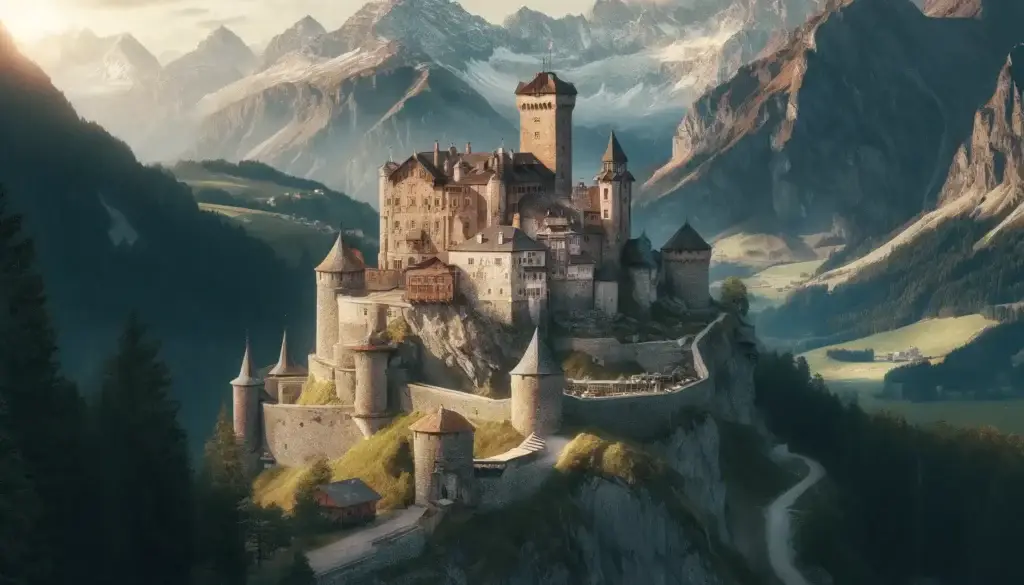
In Tyrol, they are incredibly proud of their historical past, especially the Tyrolean Uprising against Napoleon’s troops at the beginning of the nineteenth century. Here, it is worth making a small remark. By the time the French forces entered the territory of Tyrol, there was already a well-trained militia there. Everything was built thanks to the faithful mobilization system of public defense. The militia consisted of all men over eighteen who were constantly trained to use firearms to protect their homes. As an indicator, the famous Tyrolean shooters. Due to this, there was an undeniable privilege for them, according to which there was a ban on their use in any military conflicts outside their region.
Therefore, when the French entered their territory, the Tyrolese riflemen in the narrow Alps defeated these troops and drove out the Bavarian troops from Innsbruck. But this was not the end of the story.
A little later, Napoleon’s troops defeated the Austrian army and forced the government to sign an armistice, according to which Tyrol was once again returned to Bavaria.
Then, an ordinary peasant, Andreas Hofer, raised and led a popular uprising against the French army, forcing them to leave the Tyrol in disgrace again. Unfortunately, the rebellion was suppressed later, and Hofer and his associates were shot. Nevertheless, he is still remembered as a folk hero of the region.
After the First World War, the beginning of the twentieth century became fatal for the empire. After the military defeat of Austria, a treaty was signed in the French city of Saint-Germain-en-Laye, according to which the collapse of the Austrian Empire was confirmed and agreed upon. As a result, Austria was limited by new borders to a territory of eighty-four thousand square kilometers with a population of almost seven million.
According to this treaty, the former Austrian provinces of Moravia, Silesia, and Bohemia were included in Czechoslovakia. Hungary received Burgenland. Italy expanded to include South Tyrol. In addition, Austria lost most of the South Slavic territories, which were divided between Italy and the Serbo-Croatian-Slovenian state under the Treaty of Rappal.
In addition, Austria had to give up its rights in Morocco, Egypt, Siam and China; it was forbidden to have military aircraft, its army was limited to thirty thousand people, and it was forced to pay reparations.
Geographically, the land of Tyrol occupies an area of almost twenty-seven thousand kilometers, which includes Tyrol itself and two provinces – South Tyrol and Trento. It consists of the large cities of Innsbruck, Bolzano, and Trento, as well as six municipalities. The region is located among the Alps, where Adige, Inn and Drau flow. The two largest valleys of Inn and Adige are the cities of Innsbruck, Bolzano, Trento, Merano, and Rovereto.
Despite the rugged mountainous terrain, the region is known for its strategic location, convenient transit, and safe trade routes.
The most crucial trade route that stretches across the Alps and crosses the entire Tyrol is the Brenner Route, named after one of the principal passes of the Brenner, the Eastern Alpine ridge that borders Italy. The primary north-south connection to Europe. For this, a four-lane highway was built here, and railway tracks were laid for trains.
This road is a story in itself. After the First World War, Italy and Austria controlled the pass. At the same time, a few years before the Treaty of Saint-Germain-en-Laye, the secret London Peace Treaty was signed, according to which the Tyrolean territories located south of the pass were transferred to support the Entente states of Italy. Trentino and the southern part of the county of Tyrol, now South Tyrol.
The past remembers many more exciting things. Celebration here during World War II of the signing of the Pact of Steel between Hitler and Mussolini. Annexation of the pass by Nazi Germany. American troops after the end of World War II. The Italian border before Austria entered the Schengen zone.
At the same time, it is impossible not to mention the engineering miracle on the way to the Brenner Pass. It’s almost
the 100-meter-long Europabrücke bridge. It crosses the Sill River and a six-lane autobahn at an altitude of two hundred meters.
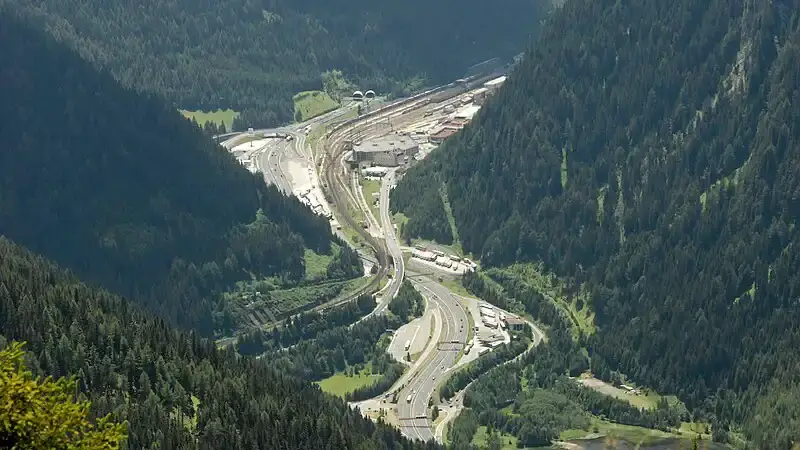
Tyrol has a rich cultural history of several neighboring peoples, preserved customs, traditions and their identity, passed down from generation to generation. Art exhibitions, art festivals, preservation of national identity. Combining Alpine art with various cultures and modern elements made creating a unique slice of culture in this area possible.
Here, you can hear the sound of the traditional Tyrolean Alphorn or Alpine horn. It is a bass-tenor wind instrument made of spruce up to five meters long, which produces natural sounds similar to a trumpet. According to experts, such a bugle is an integral historical addition to the national falsetto yodel singing and other songs of Alpine shepherds.
In modern culture, it is used by folklore groups decorated with various shows and celebrations. It also found its application in academic music. For example, Leopold Mozart created a pastoral symphony for alpine horns and strings. A famous piece for horn by Ferenc Farkas. Modern Swiss composers Jean Detwiler and Karl Rutti gave it a new sound with a current treatment.
Here is the time to remember agriculture and authentic crafts, the secret of which is kept in every family. And it doesn’t matter what we’re talking about: wood carving, net weaving, making woolen and vine products, tinctures and tinctures on mountain herbs, honey, or various kinds of cheese.
And, of course, invaluable culture in museums, history, theaters, folk crafts. Only in Innsbruck can you experience centuries of history in the Emperor Maximilian Museum, the Horkirche Court Church, the Folk Art Museum, the Grassmayr Family Bell Museum, the Tyrolean Panorama, the castle, the Congress Hall, the State Theater and many other places.
All these are priceless traditions of the region.
The economic development of Tyrol dates back to the fifties of the last century. In a relatively short period, the agricultural region became a leading player in the European Union with a modern industrial economy. Reducing the risks of economic fluctuations is achieved here due to the expansion of training in the field qualified employees, minimization and improvement of the service system, and creation of economic prerequisites.
At the same time, the share of local companies in the region in obtaining net profit is a third of the entire production. Most families and small enterprises with up to twenty employees must be involved in tourism, service provision and trade.
For this, the local government, together with the business community, develops and implements business development programs, provides access to new markets, helps study and start one’s own business, scientific research, innovation, environmental protection, energy efficiency, etc. Each year, more than one hundred and sixty million euros are allocated to small businesses and targeted programs for their management.
In addition, mineral resources, such as silver and salt, affect its economic importance in Europe.
Of course, development is impossible without an expanded, well-regulated sphere of sports, tourism and recreation. Just a few touches. In the Tyrolean ski centers in winter, you can use the lifts, more than three thousand of which are located on twenty-two thousand kilometers of ski tracks. More than sixteen thousand kilometers of trails are equipped for cross-country skiing. In the summer, tourists are offered twenty-four thousand kilometers of hiking routes of varying difficulty, almost six thousand kilometers of bicycle routes, eight thousand routes for mountaineering and sport climbing, many golf courses, etc. And, of course, to raise your tone, you can rest and taste national cuisine in small mountain huts, of which there are almost one and a half thousand, in virtually any place of the rugged Alps on your dream climb to the peaks or on vacation.
Tyrol has always had a significant place in Europe. To understand its current role in European politics, it is worth starting with the structure of the regional government of Tyrol and its functioning.
The administration is managed by the government, which includes, together with the governor, up to eight people. He is responsible for management. In addition, legislative processes are entrusted to the political body – Tiroler Landtag. The regional council considers only critical and controversial issues as the only governing body. All other decisions fall under the competence of the provincial government, where the governor presides over cabinet meetings and represents Tyrol in Austria and abroad. The government makes its decisions unanimously.
Currently, Tyroleans fully participate in the legislative initiative of the European Union, using it to defend their regional, national and European interests.
Austria’s membership in the European Union allowed Tyrol to take local problems, particularly in European states, as joint problems. Whatever it was about. Or the transit of transport through the Tyrolean territory, management problems in the mountains, and much more.
This approach shows that globalization results in cooperation between countries and regions. Integration to Europe provides an opportunity for development and maneuvering for small national economies.
Tyrol’s rich history, located west of the Austrian mountain range, is present in everything here. In rocky mountains and glacier-covered peaks, vast alpine pastures, unique historical relics embodied in majestic age-old castles, monumental churches, balustrades and historical frescoes on houses. Almost all of these are in the historic districts of the cities and remind you that you are next to a thousand-year-old relics shrouded in history. A classic hybrid of elegant Gothic and pompous Baroque, bordering the mysterious houses of local farmers and exquisite architectural solutions of modern design.
This is only a tiny part of the rich history of Tyrol.